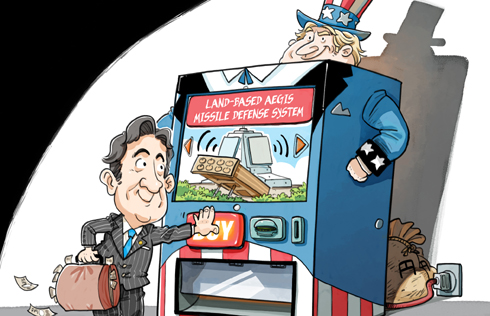A good basis for action on 'carbon budget'
The policy issue a carbon budget raises is to identify the longer-term trends that need to be modified, rather than agree to short-term targets. With the global middle class expected to triple by 2030, the central issue is how an acceptable level of well-being for each person can be achieved without having a serious impact on the planet. How the limits are approached depends on what is regarded as essential for human well-being.
An analysis of patterns, trends and drivers of natural resource use shows cities produce three-quarters of greenhouse gas emissions, which are related to household consumption. The nature of industrialized societies - urbanization - is the major driving force for increased demands for materials and energy. Urbanization involves two transitions - the establishment of infrastructure, or consumption of material resources, as a necessary part of the process of economic development, and higher incomes supporting changes in consumption patterns, that are largely non-material goods and services. Both are direct inputs to human well-being, and each is responsible for roughly a doubling of the rate at which natural resources are used.
The key conclusion of the new finding is to shift the focus from production to consumption patterns. This implies three shifts. First, the current objection to the use of fossil fuels for the generation of electricity ignores the fact that levels of energy use depend on urban design, type of infrastructure and consumption patterns. In industrialized countries, two-thirds of the electricity generated is used in buildings. Second, in land-use systems, which also cause a quarter of total global emissions, half the emissions are generated subsequent to agricultural production in storage, preparation and transport. If urban eating habits change, global GHG emissions from agriculture can come down to below 1990 levels, even though the demand for food goes up by one-third during the next 20 years. Third, transportation emissions may equal half of global emissions in 2050. These are the fastest growing emissions and are linked to economic growth and wealth and not population, and continue to increase in industrialized countries.
Settlement patterns largely shape electricity demand, transportation use and consumption patterns. Spatial organization, density and lifestyle choices determine natural resource use. As the Chinese and Indian societies are now defining their lifestyles, spending patterns and markets with significant impact on global trends, they should not adopt the structures, technologies and practices of industrialized countries in designing their urban transition.
A carbon budget approach will show that industrialized countries, with 15 percent of the global population, are likely to account for one-third to one-quarter of total global energy use in 2100. This will shift the international debate from apportioning responsibility to acting collectively in the face of uncertain threats for sharing prosperity.
How the ecological limits are approached will prompt a debate on how to move away from the historical patterns of resource use pioneered by the industrialized countries and design new structures for well-being. It should also lead us to examine the preferences of individuals and the realization that high consumption does not guarantee happiness.
The author is a former advisor to the United Nations Environment Programme.
(China Daily 10/08/2013 page8)





















